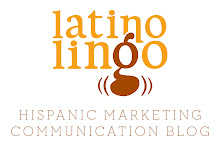AIM Tell-A-Vision Group is planning to attend the
National Association of Television Program Executives in part to continue its efforts to have
Nielsen Media Research begin measuring Hispanic TV viewing based on country of origin rather than language spoken in the home.
An article in Media Week says the dispute between AIM-TV and Nielsen surfaced in November, when AIM said Nielsen's current method of measuring Hispanic viewing of English-language TV under estimates viewership because it doesn't account for country of origin.
Nielsen counters by saying it has found the best way to measure Latino use of television was to use language spoken in the home. According to the article, executives at Nielson have said it would consider this if AIM could show credible research that country of origin plays a more important role, and if a majority of Nielsen clients petitioned for a change.
As a Hispanic of Colombian origin married to a Puerto Rican, I'm not convinced that country of origin plays a large a factor as language. I mean, we watch Caracol and WAPA, not to mention programming on English language TV, since we are bi-lingual. Does me being Colombian make me more or less inclined to watch American Idol? Does it matter how a Colombian compares to a Dominican in watching, say, Survivor?
Further, while there are large concentrations of Hispanics from one country of origin living together in many parts of the country, there are also scores more that live in bi-cultural households. I have a cousin that married a first-generation Mexican, and others who have married Caucasians (some of which are fluent in Spanish and enjoy Spanish TV programming). So, accounting for bi-cultural family viewing patterns is a very complicated matter and a fragmented approach in my opinion. After all, how are advertisers supposed to interpret data sets that now include homes where people are from 2 different countries of origin yet speak primarily Spanish at home?
I agree with most of AIM's contentions, and it's clear Nielson has a long way to go to have an accurate sample methodology. The current method is poor and tends to underrepresent our English TV viewing patterns, as AIM contends. It is also true that Nielson used research funded by Spanish language television. However, I'm just not convinced based on what I know that adding country of origin will de-complicate matters.
AIM has set up a website called
Change The Sample to help make its case. Let's stay tuned ...
Thanks to Jack,
The Mason Technologist, for forwarding me the story.

